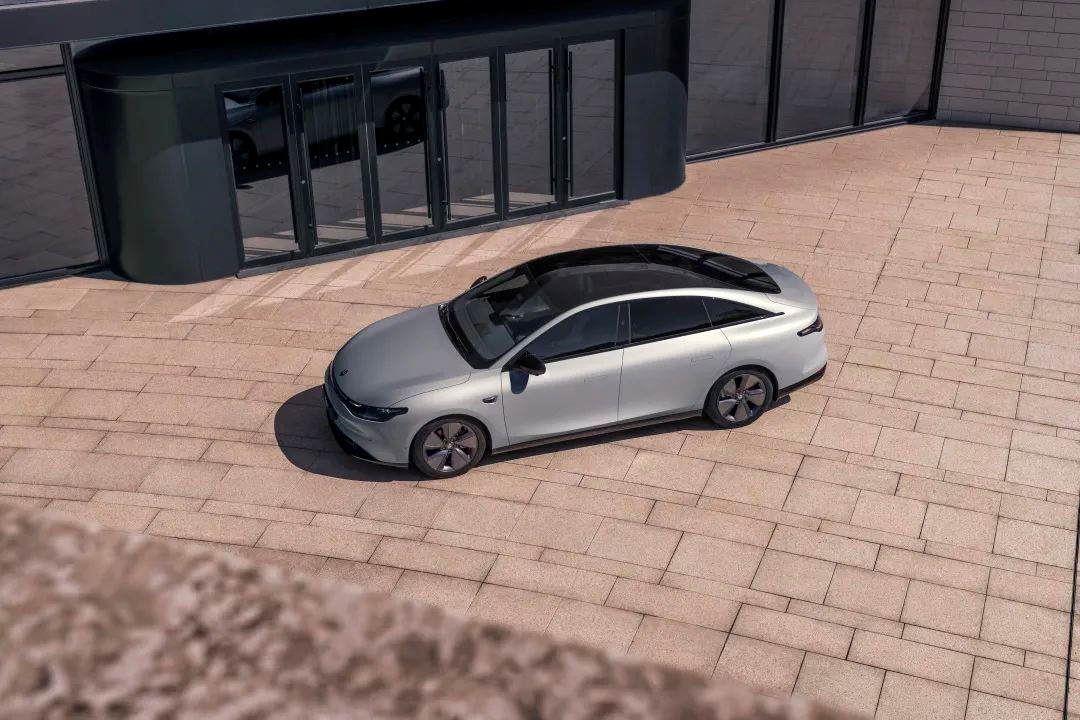Author: Rezz
In the extraordinary year of 2022, for the Zero Run car, it was undoubtedly remarkable: the release of the CTC technology and its open sharing to the entire industry for free, the sales volume exceeded 100,000, and the successful listing on the Hong Kong stock market, these series of intensive actions and events have made Zero Run, a “dark horse” in the new force camp, show a different color.
In 2022, Zero Run delivered 111168 vehicles, a year-on-year increase of 154%. On the new force delivery list, which is almost within reach, NIO (122486 vehicles), XPeng (120757 vehicles), and Ideal (133246 vehicles) are only one step away.

In the eyes of the industry, the rising road of Zero Run, which has experienced ups and downs to this day, shows the technical strength of Zero Run’s self-developed technology and the confidence to create “equal rights” luxury cars for the people.
In fact, as early as the 1980s, China has been a soil for innovation and entrepreneurship. Zero Run and its backing Dahua are also such companies.
You can see from Zhu Jiangming himself that Zero Run is indeed a company with a strong technical flavor, and he himself is called a “super engineer.” At the beginning of 2023, Zhu Jiangming held a frank meeting at the headquarters in Hangzhou:
“In the past, we have been talking about self-developed technology, but we rarely show what Zero Run has done, how deep and broad it is, what achievements it has made. The frank meeting is more about hoping to show the current status of Zero Run, the future development trend of technology, and also hoping that everyone can understand that Zero Run is a technology-oriented company, we are a company that prices based on cost, not based on brand. Since we can achieve this, we must establish corresponding capabilities.”
Thus, the blueprint for Zero Run’s whole-domain self-developed cars is slowly being unveiled. With the establishment of Zero Run, the whole-domain self-developed cars have accompanied it all the way, and have also made Zero Run a rare hard power car company in the new energy automobile industry.
For example, 70% of the cost of Zero Run’s C11 is self-developed and produced parts, from resistors, capacitors, shells, to even car lights. As Zero Run’s sales volume continues to expand, from 8,000 vehicles in 2020 to 43,000 vehicles in 2021, 110,000 vehicles in 2022, and a target of 200,000 vehicles for 2023, and hopes to surpass one of NIO, XPeng, and Ideal, and squeeze into the top three. With the support of sales volume, leveraging technological and cost advantages, only then can greater cost advantages be achieved, and the cost sharing competitiveness of self-development + self-production can be formed.
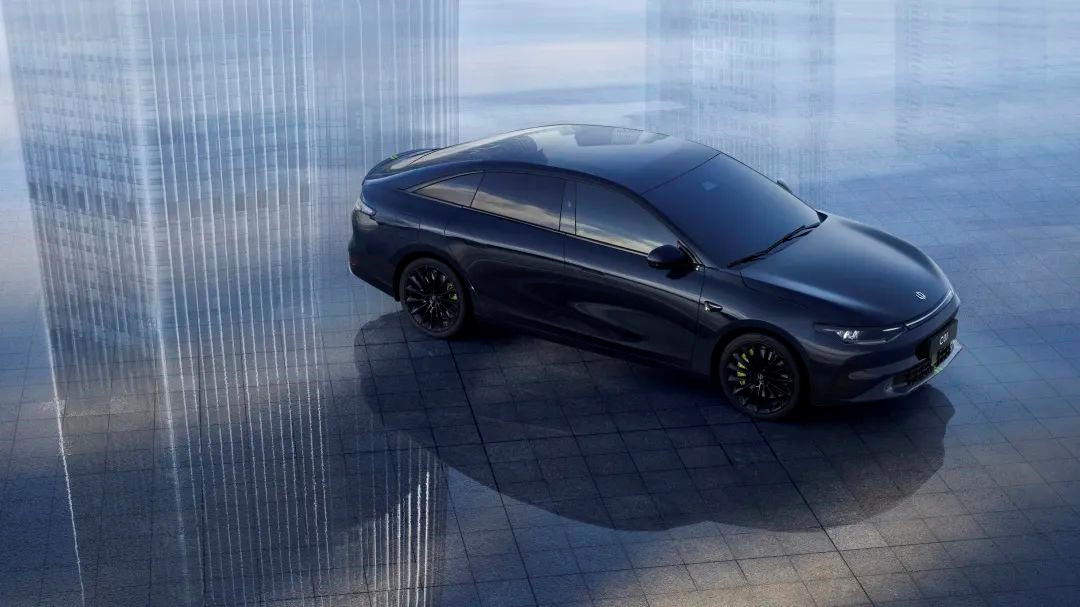
“Slow is fast, and what we need is to accumulate instead of racing ahead.” Despite the industry’s insistence on the new forces of automobile companies to speed up their efforts, Zero Run founder Zhu Jiangming said, “Decades of development in China’s automobile industry have proven that exchanging technology for the market cannot bring core competitiveness, only by mastering the core technology in our own hands and sticking to innovation can we truly succeed.”
Therefore, facing the year 2023, Zero Run is confident and capable of coping with the challenge posed by Tesla’s price reduction, forming the so-called “catfish effect”. The industry did not believe that Zero Run’s research and development costs were so low as it invested less than 1.4 billion yuan in the past three years, yet “Zero Run Automobile’s overall patent number reached 1581.” It has accumulated so many technological patent reserves in preparation for a big release, proving that it can!
Continuous evolution of technology
Through in-depth development across the entire domain, Zero Run has fully grasped the key technologies of new energy vehicles, which is also an important reason why Zero Run can globally launch and apply CTC technology.
As we all know, the core components of an electric vehicle are the three-electric systems and the smart cabin control system. Zero Run has also attempted to “capture” this mountain by independently researching the non-battery pack CTC battery-chassis integrated technology and successfully applying it to the C01 sedan. Zhu Jiangming said: “Compared with other CTC battery-chassis integrated technologies that still have the battery pack and cover, Zero Run CTC technology has only left the lower tray, and the innovative vehicle structure also forces manufacturing processes to be rigorous. By comparison, other so-called CTC battery-chassis integrated technologies are more like a compromise – PTC (Pack to Chassis).”
In terms of electronic and electrical architecture, Zero Run has successfully mass-produced distributed EE architecture and domain-controlled EE architecture, and will launch central-integrated EE architecture this year, which will highly integrate the entire vehicle’s software and hardware and reduce harness weight. It will also develop a vehicle control system with intelligent energy management to improve battery life.
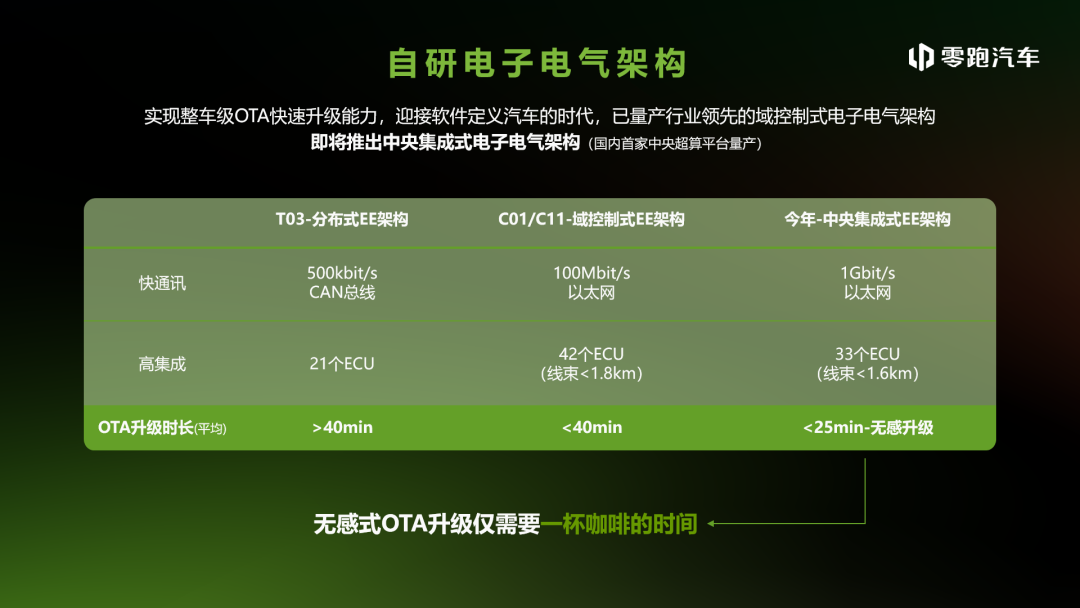
In terms of battery architecture, Luftan has independently developed and manufactured the modules, PACK, battery casing, thermal management system, BDU, and BMS hardware and software. In 2022, Luftan ranked sixth in battery installation volume in China.
Looking to the future, Luftan has reserved 800V high-voltage fast charging technology and continues to develop innovative battery pack structural technology. It optimized the existing CTC technology and launched the 2.0 technology with higher integration and compatibility with 800V high-voltage fast charging.
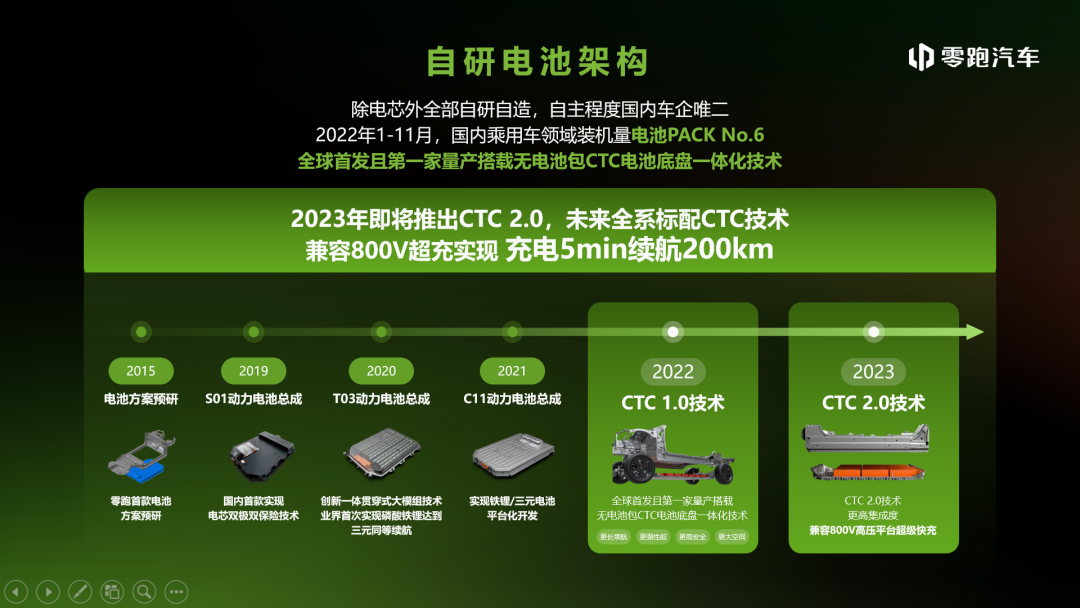
Regarding the electric drive system, Luftan has independently developed and manufactured the motor, reducer, controller assembly, system architecture, and electric drive structure. Moreover, Luftan has the capacity to produce water-cooled & oil-cooled, and extended-range systems. It has created China’s first mass-produced 200kW oil-cooled electric drive. Its efficiency, quality, and size have advantages. In the future, Luftan will focus on the development of 25,000 rpm ultra-high-power electric drives and chip integration. In March, Luftan will launch an extended-range vehicle model to expand its range of products and respond to comprehensive challenges better.
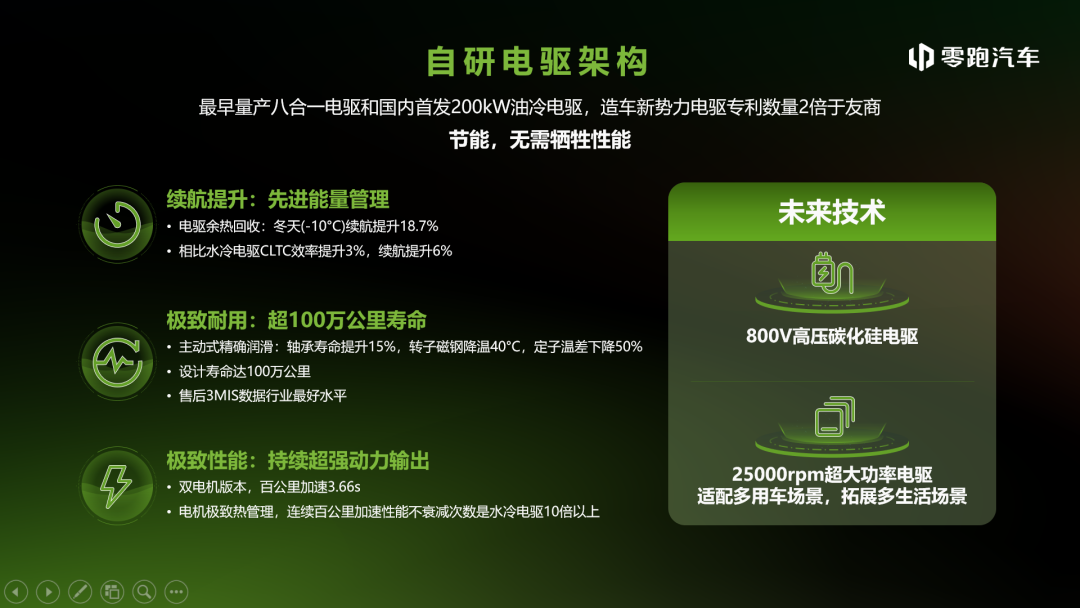
As for the intelligent cockpit part, Luftan has also developed the intelligent driving system (Leapmotor Pilot) and intelligent cockpit system (Leapmotor OS), with full-scene and deep learning characteristics. Its evolution is faster, and the feedback for the current 3.0 version is good. In order to provide users with more powerful computing power and functionality, Luftan is developing the next-generation intelligent cockpit chip.
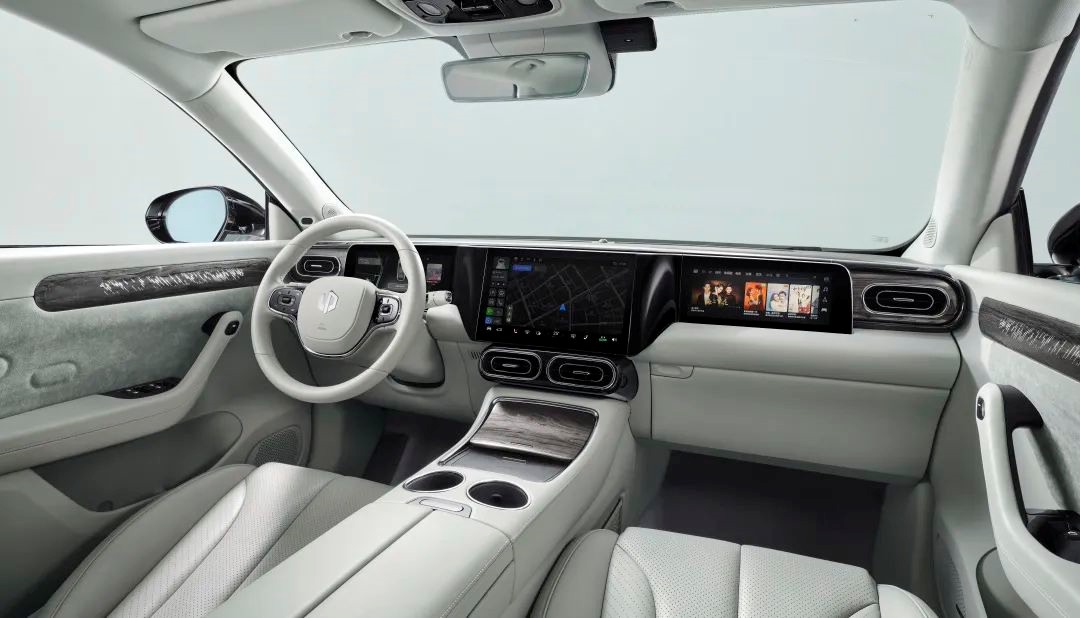
The benefits of “full-region independent research and development” are also evident. Firstly, it can reduce the cycle and cost of joint development with suppliers, improve the rate of platformization, lower costs, and provide users with more cost-effective products. Secondly, the independent calibration of hardware and software, and the low-level logic interconnection of various components, ensure high fit and consistency, reducing the problem of poor compatibility. The evolution of over-the-air (OTA) upgrades will be faster and simpler. The most important thing is to have independent control over core technology. In the face of an unstable market environment, “core technology” is less likely to be tied to other suppliers, and companies have greater pricing power.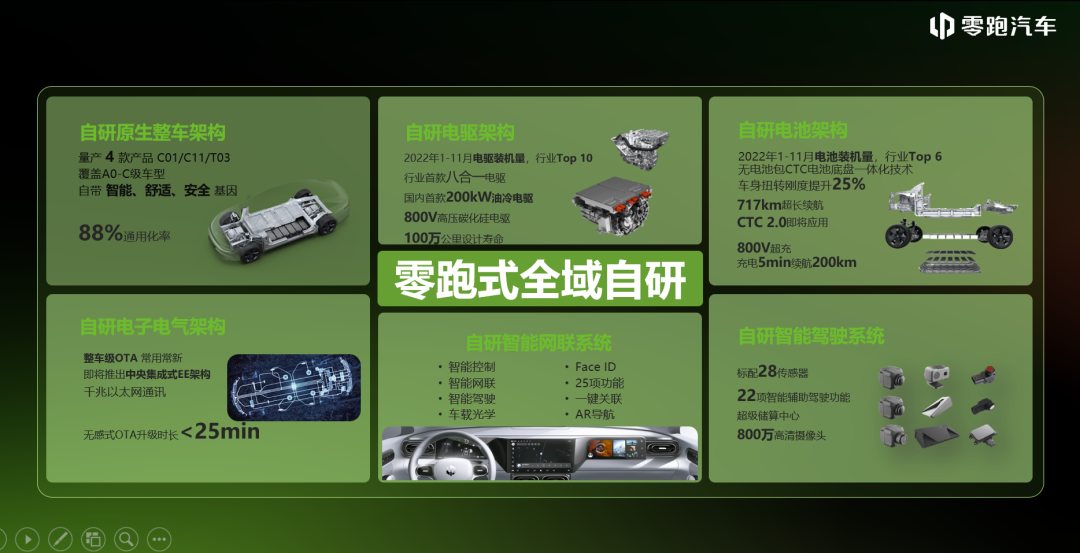
Looking back on this road, from the black technology of S01’s eight-in-one electric drive and facial recognition startup, to the breakthrough of T03 technology, the first to achieve L2-level driving assistance on A0-level cars. From C11’s oil-cooled electric drive and AI intelligent cockpit, becoming the first electric vehicle in China equipped with fully autonomous proprietary AI driving chips. And finally, to the release of the C01, the world’s first mass-produced CTC technology, all relies on a tenacious and never-give-up technology founding team.
The Triumph of the Long-term Perspective
At this technical discussion meeting, Zhu Jiangming showed a photo of the Zero Run annual meeting at its founding in 2015. It had less than 150 people, but over 80% were research and development personnel.
All of Zero Run’s R&D leaders are members of the original team, such as Zhou Xuning, responsible for electrical architecture; Song Yineng, responsible for batteries; Wu Cun, responsible for electric drive; Zhou Hongtao, responsible for intelligent networking; Wang Yaonong, responsible for intelligent driving; and Cao Li, responsible for styling design and vehicle development.
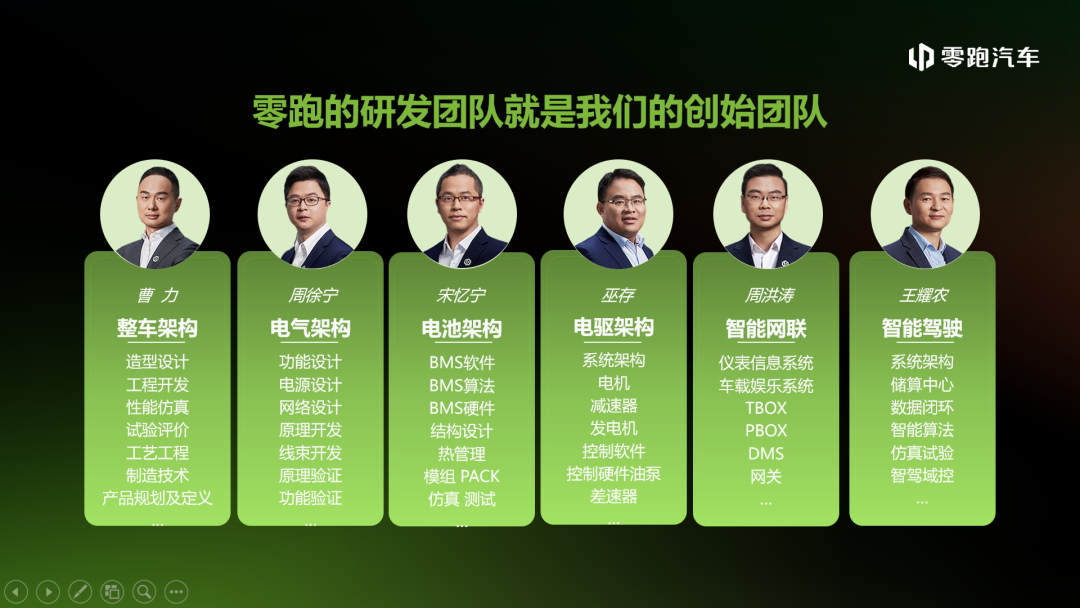
Currently, Zero Run’s three-electric R&D team has less than 800 people, and there are 2,000 R&D personnel for the entire vehicle, accounting for one-third of all employees. More R&D personnel and fewer sales administrative personnel bring about the advantage of cost sharing, allowing us to directly confront various competitions. If a car company wants to survive, it must continuously improve its ability to control costs in order to be increasingly competitive. This is also what the title mentions: to make the car industry the “Uniqlo” and follow Toyota’s “old road”.
The Ultimate Value for Money, Creates Luxury and Equality
As early as last year, Zhu Jiangming proposed that Zero Run should become its own “OEM factory,” for users, like Uniqlo, to eliminate the inflated brand premium and achieve luxury neutrality with a high price-performance ratio, so that Chinese consumers can have good cars. In fact, with the open sharing of Zero Run’s self-developed technology, it is bound to benefit the industry and accelerate the reshaping of new energy vehicles. He stated that whether self-developed or innovative, it cannot be separated from market demand and user needs. The current user demand is for high quality-price ratio products. Based on full-domain self-development + vertical integration, Zero Run will eliminate the inflated brand premium to achieve luxury neutrality with a high price-performance ratio.Over the past few years, the new energy vehicle market has actually exhibited a “dumbbell effect of big heads and small middles”. Consumers either aim for the lower price range to save money, or choose to spend more money on NIO and Ideal for dual motors, LiDAR, and a more powerful cockpit experience. However, Leapmotor, known as the price butcher, demonstrates the ambition of becoming a backbone force of the middle market for intelligent electric cars through its two models C11 and C01.
For example, the Leapmotor C01 achieves the pricing advantage of medium to large luxury cars with comfortable, performance-oriented, intelligent, and luxurious upgrades. Its size takes advantage of the current favorable trend with a 2930mm super long wheelbase and 5050×1902×1509mm size, but the ultimate goal is to make consumers pay for it, achieving a “people-to-people” connection, which is the problem encountered in Leapmotor’s development.
Facing challenges, Leapmotor has garnered more attention and challenges after its Hong Kong stock market listing. The IPO price range for Leapmotor was between HKD 48-62, finally settling at a minimum of HKD 48. However, despite the low pricing, it still fell below the IPO price.
According to Zhu Jiangming, “It was not a good period (for listing) in September last year because of global instability in a downward trend. We chose to go public mainly because we don’t care about the current period. This is a long-distance race, and Leapmotor cares more about quality.”
Leapmotor certainly has room for optimizing its product experience, for example, in the past L2 level assisted driving experience, deviation from the road has been an issue. These details can directly affect the user experience, and also affect the trust of users in Leapmotor’s self-developed L4, remote control chassis and other technological capabilities. However, for Leapmotor, developing their own chips and algorithms is not an easy road, but since they have chosen to go in this direction, they must do it well. Many manufacturers have skipped optimizing L2, and directly engaged in so-called “L2+”, L3, L4… but in fact, what all users can experience now is only L2.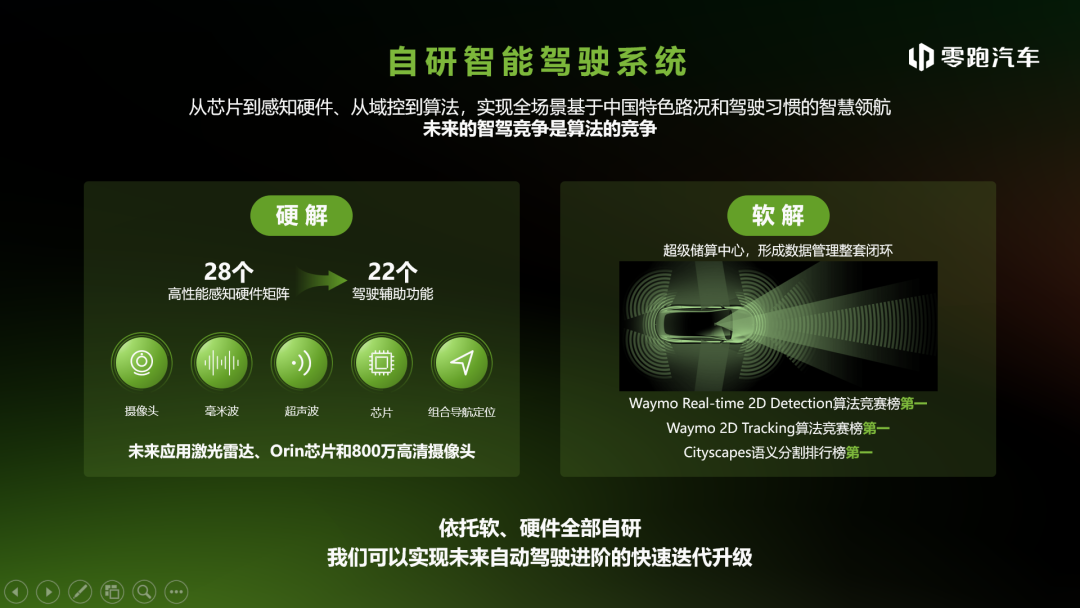
“Let traditional car users drive intelligent cars, and let fuel car users drive pure electric cars” is not just a slogan, but also the ambition of ZERO RUN’s founder, Zhu Jiangming. Ambition is not a bad thing, and Zhu Jiangming has also expressed his determination to continue pursuing it. As long as the pursuit is orderly, this healthy competition can “promote the development of the entire industry”.
Finally
Zhu Jiangming once said in an interview that the Spring Festival of 2020 was the toughest time for him. The first battle of S01 was lost and the upcoming competition of T03 brought him endless pressure and challenges. “He didn’t leave the house for half a month, but he was thinking about the future of ZERO RUN.” But after the Spring Festival of 2023, this year is still a life-or-death battle for ZERO RUN, and Tesla’s challenge to any car manufacturer is the same.
Just like this, 2023 will also be more thrilling, not only for the market and Zhu Jiangming himself, but also for these hardworking carmakers.
This article is a translation by ChatGPT of a Chinese report from 42HOW. If you have any questions about it, please email bd@42how.com.
